A little blast from the past. This was found in a transmitter manual at one of the sites we take care of:
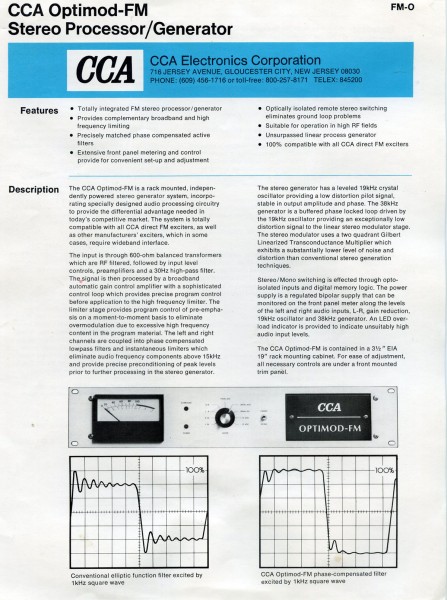
I thought I would scan it and make it available here. As luck would have it, there is also a corresponding piece of equipment to go along with it. I had never seen a “CCA Optomod” (.pdf) before I was working at one of the radio stations in Trenton, Florida. This unit was rescued from under a pile of garbage out in the lawn shed. It was full of mud wasp nests and mouse droppings. Needless to say, it required a bit of TLC to return it to operation. I replaced the electrolytics, cleaned it up, and ran some audio through it. It is probably as good as the day it left the factory. Bob Orban made some really good stuff in his day.
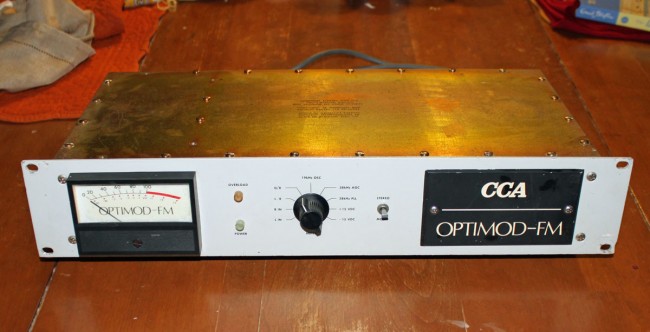
The original Optomod 8000 was an evolutionary design that made FM radio processing what it is today. The idea of combining broadband limiter, AGC and stereo generator in one box was a radical departure from the norm. The audio limiter functioned as a 15 KHz low pass filter and broadband AGC.
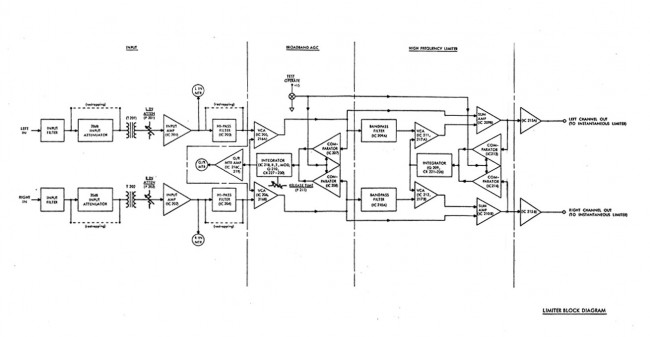
The stereo generator used very modest amounts of composite clipping to reduce overshoot and transients. Many people disparage composite clippers. If done correctly, it is transparent to the listener and increases perceived loudness by stripping off modulation product that is non-productive.
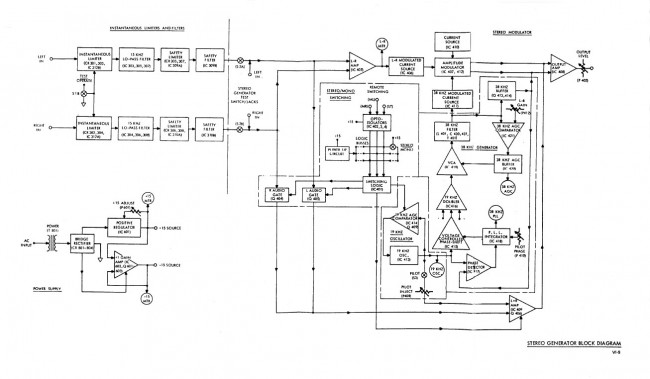
Some thirty five or so years later, there are still many of these units in service in various stations around the world.


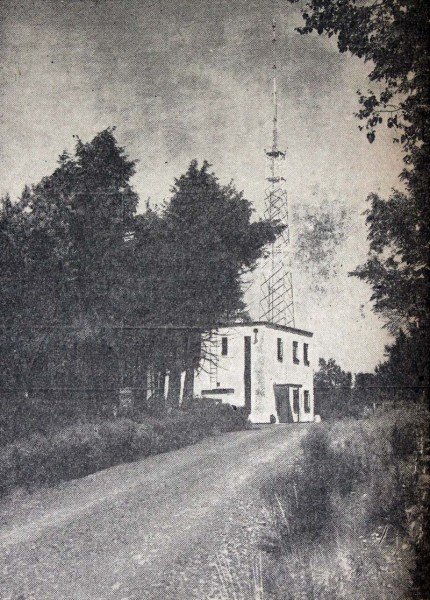
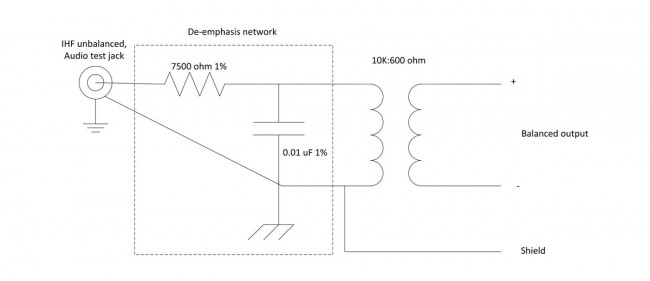
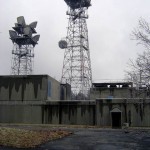
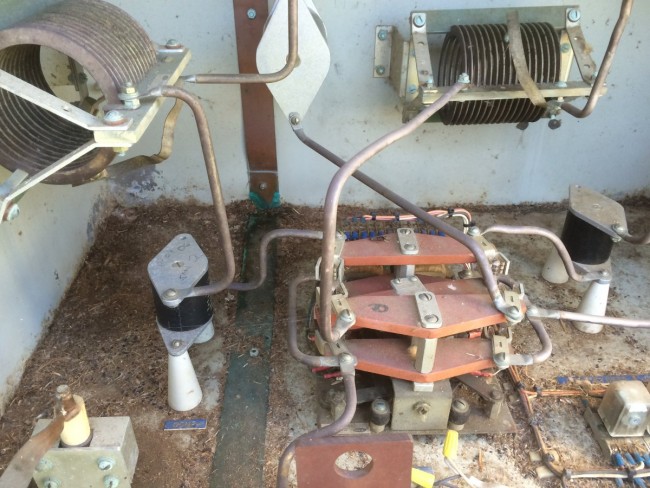
Are these serviceable units, or are these the ones with the Unobtainium parts?
Aside from the different color paint, and the CCA logo on the cover, are there any other differences between this and the Orban badged version? Are there any Orban markings on the outside of the box? How about the inside?
This unit always seemed “stock issue” to me but, feed it a good clean analogue signal from a stable equalizer like a URI or other studio quality unit and you could have a very competitive sound, even today.
You had to be creative and clean on the front end to make it sing.
Stable dynamics of the program source is the key.
It won’t shimmer but can shine with a relatively gentle format.
Yes,re-cap the hell out of it after 30 years!
http://www.optimod.fm/
Please have a look at this page,it has audio of referbished units,truly tech porn and will bring back memories for many.
Jon/Eliot,
Except for the paint job, it seems to be in every way a stock 8000. The back has a standard Orban sticker on it. As far as parts unobtainium, I don’t think so. The op-amps can be replace with TI TL07x series op-amps if needed.
I seem to recall that BE has Optimod 8100’s painted in blue to match their transmitters at one point so I doesn’t surprise me that this went back as far as the 8000a.
Now that I think back,Bill is 100% correct!
Harris did the same thing as they transitioned products and aquired businesses into their fold or simply partnered with product it simply made no sense to try and duplicate.
Here’s a quiz:
What companies or products did Harris take over or “brand” through the years?
I’ll get you started!
1-GE Transmitters-Harris.
2-RCA Antenna and desighn operations-Harris(at least in part).
3-GE Camera Division
4-GE Audio consoles and DA’s(Am I wrong?)
Even I have trouble remembering the “Sears of broadcast” product line.
They built the first real TV station I worked at as a “turnkey” from microphone to antenna!
And id worked and could grow painlessly.
Just for fun folks!
Elliot
I did a little digging and found a picture of the rare BE blue 8100/A1 on a Greek radio enthusiast website:
http://www.261.gr/orbanmus.html
About two-thirds down the page are two pictures, one of the front and the seconds with the front panel hinged down.
Speaking with a ham, TV engineer, and all around electronics wizard, I was pointed to this resource:
http://www.thatcorp.com/Tech_Papers.shtml
http://www.thatcorp.com/Design_Notes.shtml
http://www.thatcorp.com/Seminars.shtml
Lots of goodies about microphone preamplifiers, compressors, limiters, compressor and limiter design, and so on.
Of course, any talk about compression and limiters isn’t complete without mentioning asymmetrical peak limiting, used in AM radio to clip the negative peaks, which would otherwise cause splatter.
More on audio processing:
http://w4neq.com/htm/hamaudio.htm
http://www.google.com/patents/US3200344
Don’t forget the Optimod TV! For years, there’s been one in the racks at the facility where I work. The needles move a bit if you stare at it long enough as it is still powered up for no apparent reason. I have no idea when we actually stopped using it, probably before the analog shutdown, but some audio seems to be feeding it. I also noticed that there is a bunch of Optimod TV’s on eBay, like more than you would expect and most seem to be from one seller. Could these be of use to a “free” FM broadcaster? I know of several unlicensed stations in my area that could use some processing- the distortion and splatter on one of them is truly amazing. They must not listen to their own signal off-air. Of course, if you gave them one of these things it would probably be used to hold a door open…
What’re you doin’ down in my neck, Paul?
You didn’t move, did you?
Move? No, my previous employer owned several stations in Gainesville/Ocala market. I spend many weeks (months?) traveling back and forth working on projects.
Got it. I’m a bit further south than that, west of Tampa.